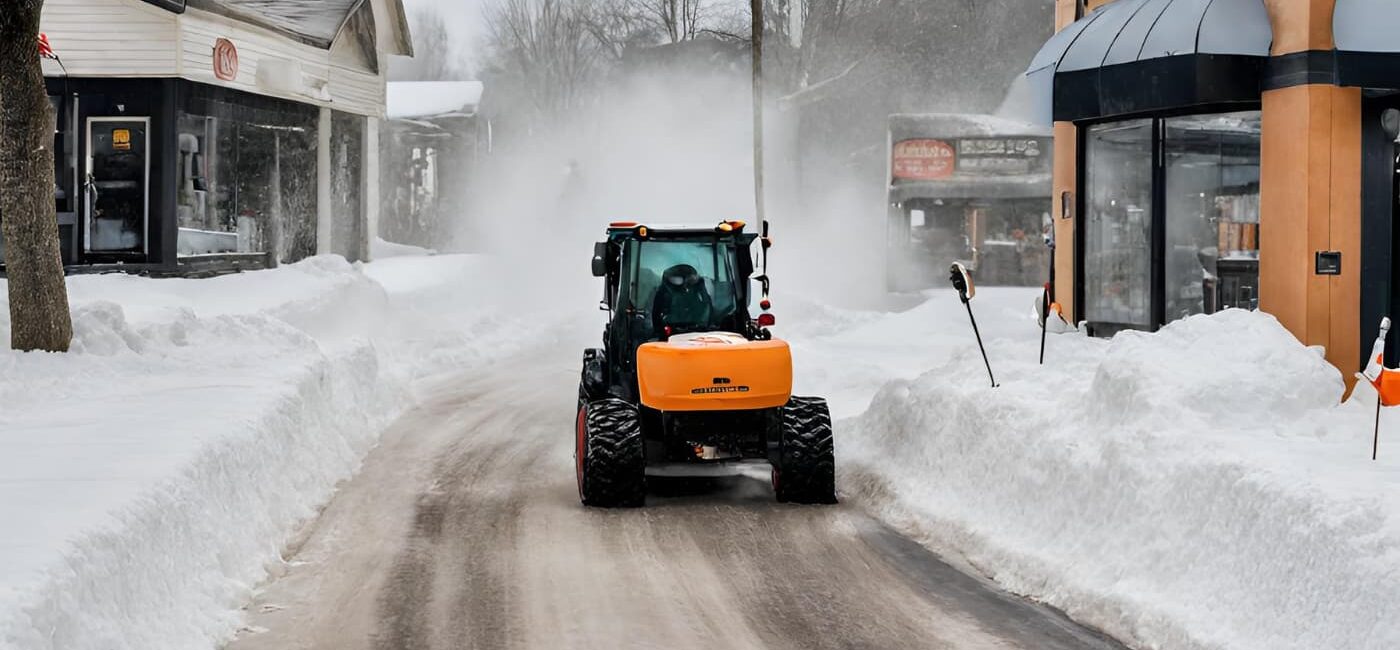As winter’s icy breath descends upon us, commercial properties must brace themselves for the challenges that the season brings. The arrival of snow and ice may paint a picturesque scene, but it also ushers in the need for meticulous winter preparedness, such as salt for ice melt. In this comprehensive guide, we will delve into the critical realm of snow removal services and their planning for commercial properties.
Understanding the Necessity of Snow Removal Plans
In the world of commercial properties, where safety, accessibility, and business operations are paramount, the necessity of snow removal plans cannot be overstated. Snow accumulation can swiftly transform parking lots, walkways, and entrances into hazardous zones, affecting not only the well-being of those on the property but also the bottom line. The key to successful winter preparedness lies in proactive planning.
When winter storms blanket your property in a thick layer of snow, it can become more than just an aesthetic concern. It becomes a logistical challenge that threatens daily operations, employee safety, and customer satisfaction. Snow removal plans are your strategic response to this challenge, designed to keep your property safe and accessible even when winter is at its harshest.
Key Elements of an Effective Snow Removal Plan
Creating an effective snow removal plan involves several key elements:
- Pre-Storm Preparations: The foundation of any plan involves pre-storm preparations. This includes having the right equipment and personnel ready to respond when the snow begins to fall. Effective snow removal begins before the storm hits, with thorough planning and preparation.
- Designated Snow Stacking Areas: Strategically designated snow stacking areas prevent the haphazard piling of snow, ensuring that it doesn’t obstruct traffic or pose safety risks. Proper snow stacking is a critical part of managing snow accumulation.
- Communication Protocols: Clear communication protocols are vital for coordinating snow removal efforts and ensuring everyone is on the same page. Whether it’s between your team members or with professional snow removal services, effective communication is key to success.
- Prioritization: Snow removal plans prioritize high-traffic areas, such as parking lots and walkways, to ensure that these critical spaces remain safe and accessible. Prioritization ensures that resources are allocated where they are needed most like parking snow removal.
- Regular Maintenance: Regular snow removal and maintenance schedules help prevent snow buildup, reducing the risk of accidents and business disruptions. Consistency is key to keeping your property safe throughout the winter season.
Benefits of Professional Snow Removal Services
One of the cornerstones of effective snow removal planning is considering professional snow removal services. These services offer numerous benefits:
- Expertise: Professional services bring a wealth of expertise to the table, ensuring that snow removal is conducted efficiently and effectively. They understand the unique challenges of snow removal and have the knowledge to overcome them.
- Specialized Equipment: They possess specialized equipment designed for the unique challenges of snow removal, allowing for a prompt response to winter weather. From snowplows to de-icing equipment, they have the tools needed to get the job done.
- Reliability: Professional snow removal services offer reliability and consistency, which is essential for maintaining safety and accessibility. When you partner with professionals, you can count on them to be there when you need them, regardless of the weather.
Customizing Snow Removal Plans
Snow removal plans can and should be customized to meet the unique needs of different commercial properties. Factors such as property size, foot traffic, and local weather conditions all play a role in shaping a plan that suits a property’s specific requirements. Flexibility is a key component of successful snow removal planning, allowing adjustments based on changing conditions.
Ensuring Safety and Accessibility
Above all, the central goal of snow removal plans is ensuring safety and accessibility. This includes prioritizing the clearing of high-traffic areas like parking lots and walkways. Strategies such as creating safe pathways for customers and employees are fundamental to this objective.
Understanding that customer satisfaction and employee well-being are at the heart of commercial properties, it is crucial to minimize disruptions caused by snow accumulation. This not only preserves the integrity of the business but also fosters a positive and secure environment for all.
Environmental Considerations and Regulations
Snow removal efforts must also be mindful of environmental considerations and local regulations. Responsible snow disposal methods, such as using eco-friendly de-icing agents, such as pavement salt, and adhering to environmental regulations, demonstrate a commitment to sustainability.
Local laws governing snow removal and snow disposal should be understood and followed diligently. Compliance ensures that snow management efforts do not harm the environment or infringe upon local regulations.
Conclusion
Winter preparedness, with an emphasis on effective snow removal planning, is an indispensable part of maintaining safety and accessibility for commercial properties. While the challenges of winter weather are undeniable, proactive planning and strategic partnerships with professional snow removal services empower commercial properties to conquer these challenges. The result is an environment where customers and employees can navigate the winter season with confidence, knowing that safety and accessibility are assured. In essence, winter preparedness is not just about snow; it’s about preserving the warmth and functionality of commercial properties in the coldest of seasons.
